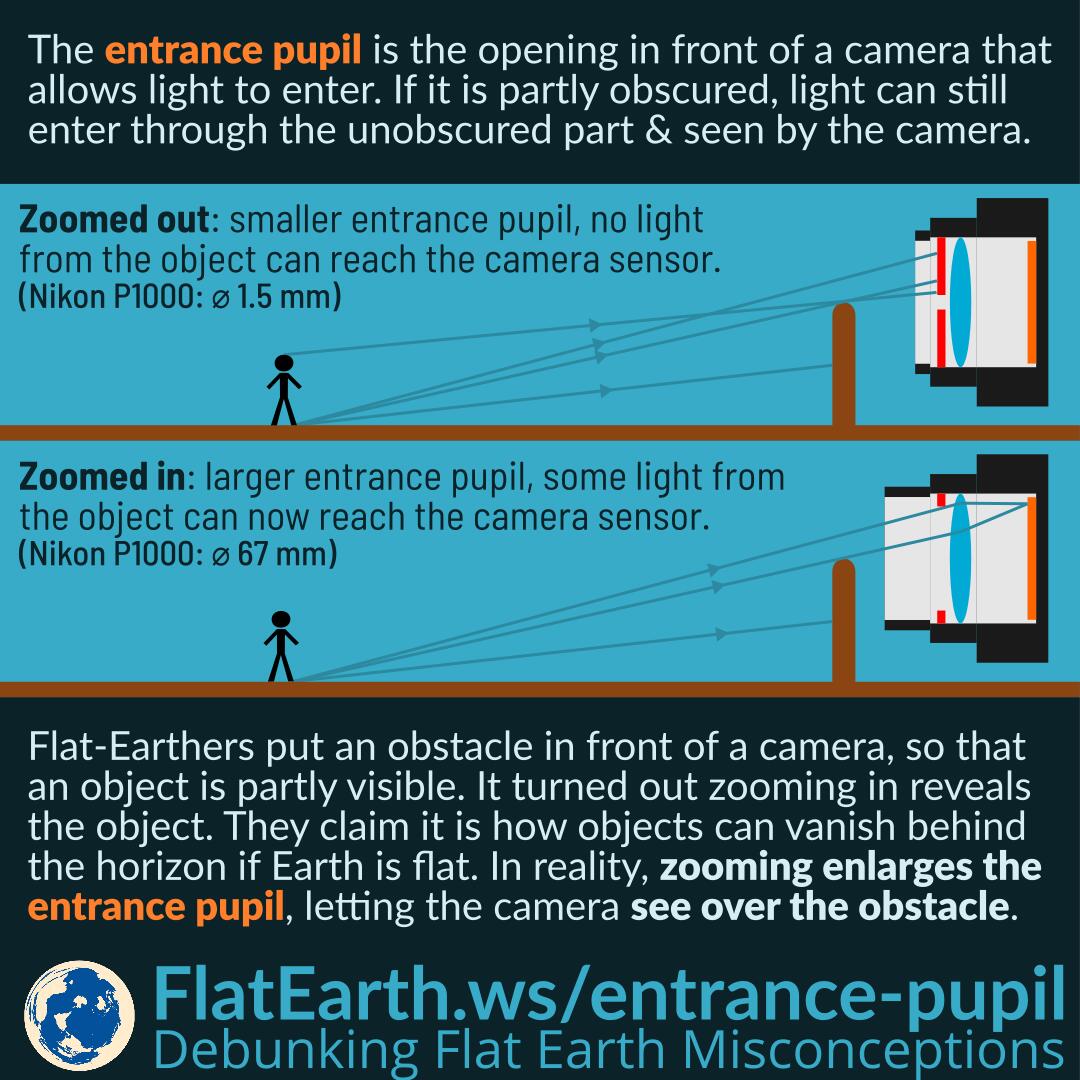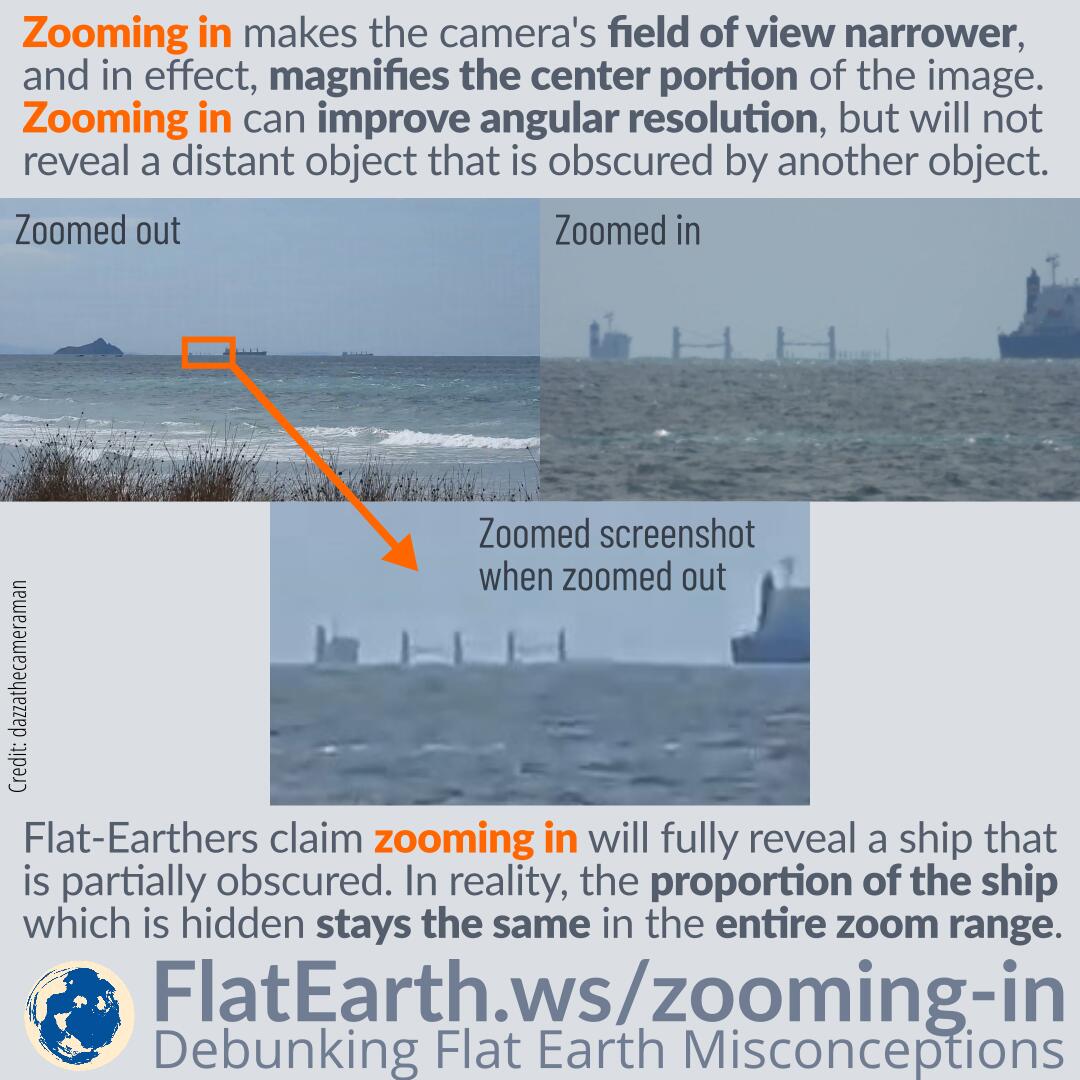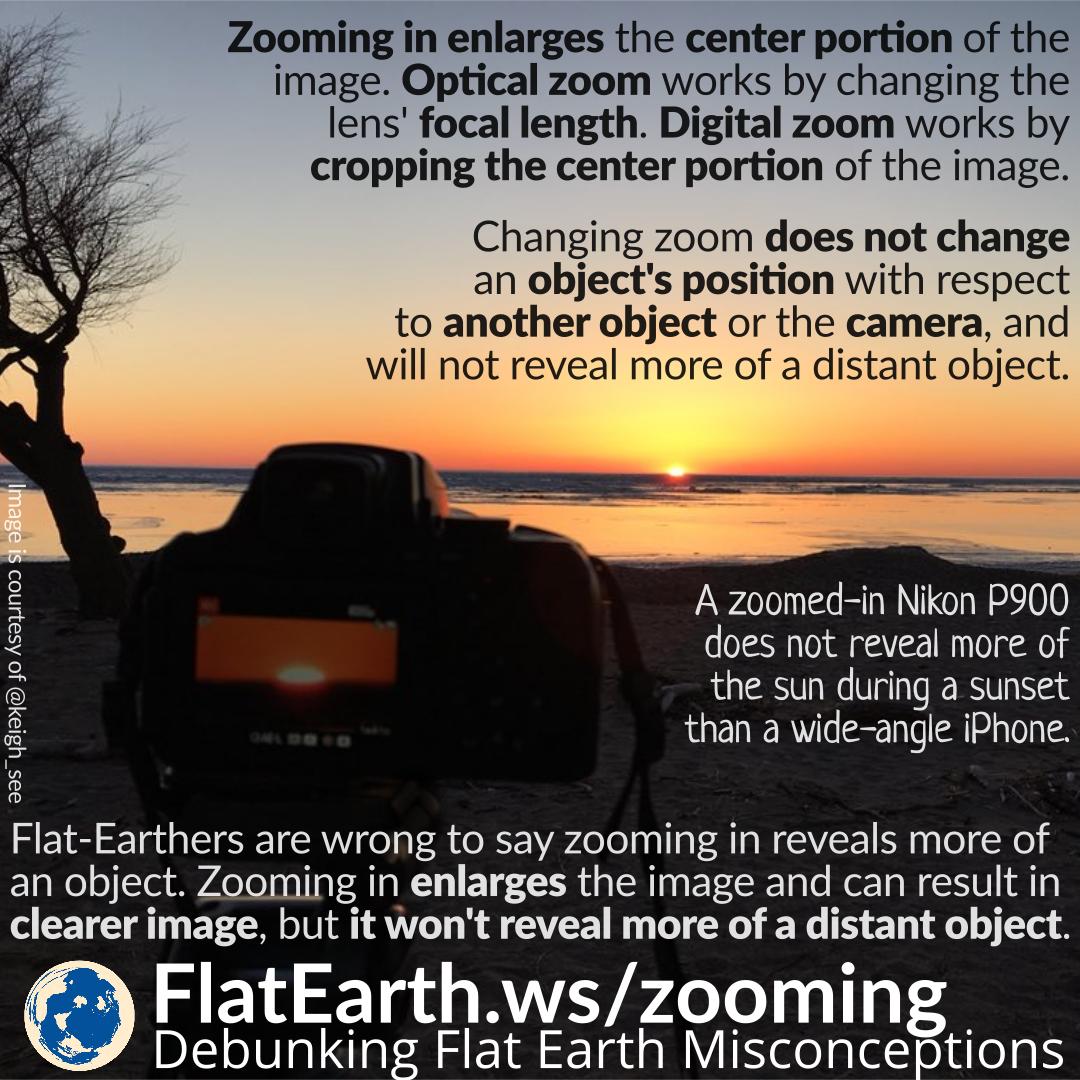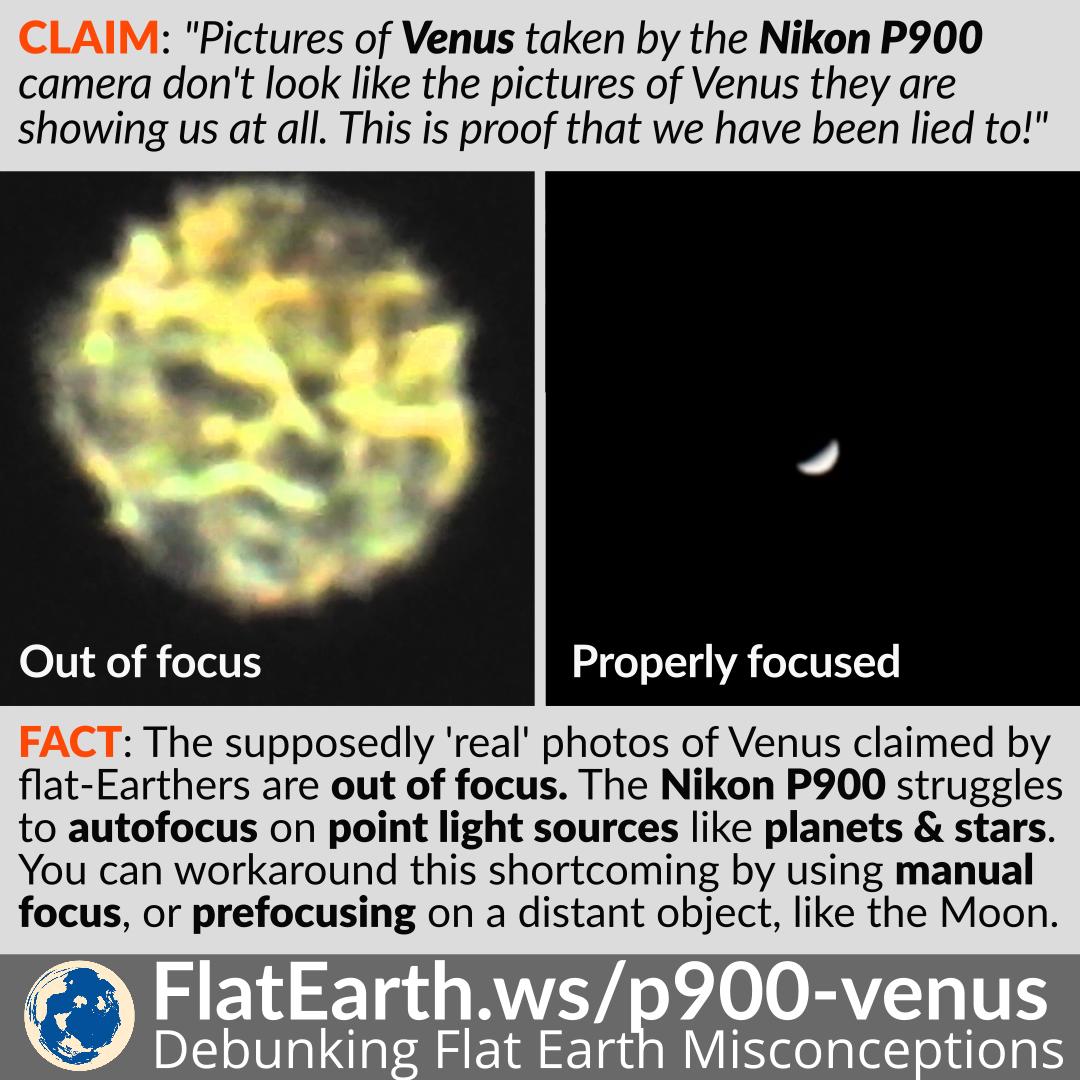From an observer on a shore, the distance to the horizon is 5 km (3 miles), or more if the observer is higher. Therefore, Earth’s curvature obscures objects starting from that distance. If the objects are not large enough, we need an optical aid, like zooming in using a camera, to see them in the first place.
Flat-Earthers often show us wide-angle photos to demonstrate that objects are not obscured by Earth’s curvature. In reality, in such photos, objects far enough to be obscured by Earth’s curvature cannot be resolved. It is hard to see objects obscured by Earth’s curvature if the objects themselves are not visible in the picture.
Continue reading “Objects Obscured by Earth’s Curvature and Zoom Factor”






